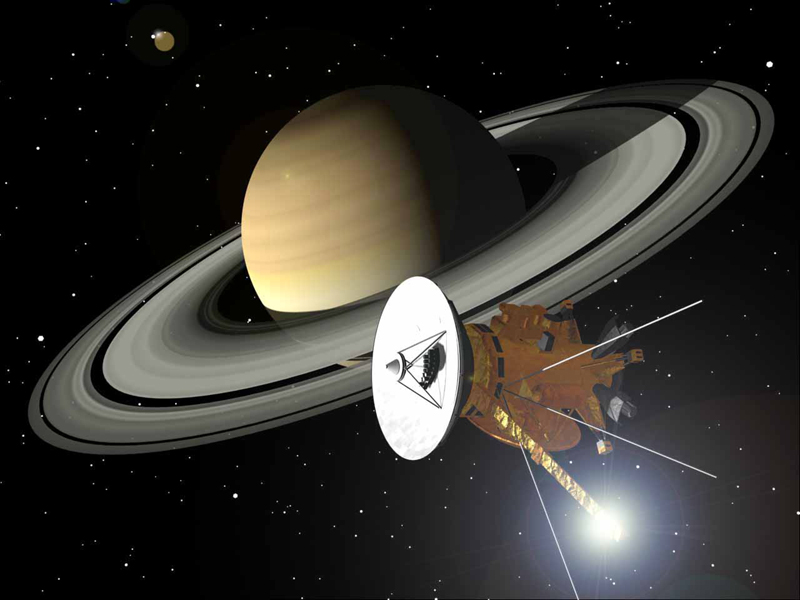ABC of Astronomy – E Is for Ecliptic

Around five billion years ago the Sun was a dizzy young thing. It was rotating on its axis, and an enormous dusty disk revolved around it. The planets, moons, asteroids and other objects formed from the disk material. Although the disk no longer exists, the plane that it occupied is still marked by the orbits of Solar System bodies. It's called the ecliptic plane. The orbits aren't circular, they are somewhat squashed circles known as ellipses. The eccentricity of an orbit tells us how squashed its shape is.
The ecliptic
As the Earth journeys around the Sun each year, we see the Sun's position changing against the background of fixed stars. The path that it seems to take is called the ecliptic. The constellations that lie along this path served as a sort of calendar and were of religious significance to ancient peoples. They are the zodiac constellations.
Instead of just thinking about the ecliptic as a path, try to imagine it as a flat surface, a plane. It would stretch from the Sun out into the Solar System. The planets orbit on the ecliptic plane. The eight planets are pretty much in the same plane. However Pluto's orbit is tilted to the ecliptic by 17 degrees.
So the ecliptic is where the planets are, and it's the center line of the zodiac. But why is it called the ecliptic? It's because it's related to eclipses. Although the Moon is also on the ecliptic, its orbit is slightly tilted – about 5 degrees – to Earth's orbit. There are two points where the orbits cross, and these are called nodes. If there's a new Moon or a full Moon when the Moon is at a node, then the Sun, Earth and Moon are lined up for an eclipse.
Ellipse
For centuries people assumed that orbits were circular and that Earth was at the center of the cosmos. Circles and spheres, being perfect shapes, were a feature of the heavens, and a contrast to our imperfect Earth. In fact, the planetary orbits in the Solar System are close enough to being circular that it takes a lot of careful observation and measurement to detect that they aren't.
However, if you assume the orbits are circular, predictions about planetary motion will not be accurate, nor will forecasts of events such as a transit of Venus. In order to make the model fit the observations, Ptolemy (90-168) had the planets moving on complicated system of circles. It actually worked fairly well in terms of prediction, but over a long period of time the errors became noticeable.
There was some improvement when Copernicus put the Sun in the center of the system. Yet it still wasn't accurate because Copernicus kept the circular orbits. The breakthrough came with the work of Johannes Kepler (1571-1630). Kepler, who was a mathematician, used the meticulous observations over a period of years by Tycho Brahe (1546-1601) to make sense of planetary motions. It was only when he got the idea that perhaps the orbits weren't circular that he was able to make theory and observation match.
Kepler found that the orbits were ellipses. This matched Brahe's data, and Kepler was able to describe them mathematically.
An ellipse is a squashed circle, with two focal points called foci. In terms of the Solar System, the orbits of the planets are ellipses and the Sun is at one focus. A circle is a special case of an ellipse, in which both foci are in the same place.
Eccentricity
Eccentricity is a term that tells us how rounded an ellipse is, on a scale of 0 to 1. A circle has an eccentricity of 0 (e=0). An ellipse can't have an eccentricity of 1, but a very long narrow ellipse could be close to 1. The Solar System planets don't have highly eccentric orbits. Venus has the most rounded orbit with e=0.0068. Dwarf planet Pluto has the most eccentric orbit (e=0.2488), and as we saw in an earlier diagram, its orbit is also notably tilted with respect to the ecliptic. It's a feature of many of the most distant objects that they have eccentric and tilted orbits.
The ecliptic
As the Earth journeys around the Sun each year, we see the Sun's position changing against the background of fixed stars. The path that it seems to take is called the ecliptic. The constellations that lie along this path served as a sort of calendar and were of religious significance to ancient peoples. They are the zodiac constellations.
Instead of just thinking about the ecliptic as a path, try to imagine it as a flat surface, a plane. It would stretch from the Sun out into the Solar System. The planets orbit on the ecliptic plane. The eight planets are pretty much in the same plane. However Pluto's orbit is tilted to the ecliptic by 17 degrees.
So the ecliptic is where the planets are, and it's the center line of the zodiac. But why is it called the ecliptic? It's because it's related to eclipses. Although the Moon is also on the ecliptic, its orbit is slightly tilted – about 5 degrees – to Earth's orbit. There are two points where the orbits cross, and these are called nodes. If there's a new Moon or a full Moon when the Moon is at a node, then the Sun, Earth and Moon are lined up for an eclipse.
Ellipse
For centuries people assumed that orbits were circular and that Earth was at the center of the cosmos. Circles and spheres, being perfect shapes, were a feature of the heavens, and a contrast to our imperfect Earth. In fact, the planetary orbits in the Solar System are close enough to being circular that it takes a lot of careful observation and measurement to detect that they aren't.
However, if you assume the orbits are circular, predictions about planetary motion will not be accurate, nor will forecasts of events such as a transit of Venus. In order to make the model fit the observations, Ptolemy (90-168) had the planets moving on complicated system of circles. It actually worked fairly well in terms of prediction, but over a long period of time the errors became noticeable.
There was some improvement when Copernicus put the Sun in the center of the system. Yet it still wasn't accurate because Copernicus kept the circular orbits. The breakthrough came with the work of Johannes Kepler (1571-1630). Kepler, who was a mathematician, used the meticulous observations over a period of years by Tycho Brahe (1546-1601) to make sense of planetary motions. It was only when he got the idea that perhaps the orbits weren't circular that he was able to make theory and observation match.
Kepler found that the orbits were ellipses. This matched Brahe's data, and Kepler was able to describe them mathematically.
An ellipse is a squashed circle, with two focal points called foci. In terms of the Solar System, the orbits of the planets are ellipses and the Sun is at one focus. A circle is a special case of an ellipse, in which both foci are in the same place.
Eccentricity
Eccentricity is a term that tells us how rounded an ellipse is, on a scale of 0 to 1. A circle has an eccentricity of 0 (e=0). An ellipse can't have an eccentricity of 1, but a very long narrow ellipse could be close to 1. The Solar System planets don't have highly eccentric orbits. Venus has the most rounded orbit with e=0.0068. Dwarf planet Pluto has the most eccentric orbit (e=0.2488), and as we saw in an earlier diagram, its orbit is also notably tilted with respect to the ecliptic. It's a feature of many of the most distant objects that they have eccentric and tilted orbits.
You Should Also Read:
Lunar Eclipses
Starbirth
Johannes Kepler - His Life

Related Articles
Editor's Picks Articles
Top Ten Articles
Previous Features
Site Map
Content copyright © 2023 by Mona Evans. All rights reserved.
This content was written by Mona Evans. If you wish to use this content in any manner, you need written permission. Contact Mona Evans for details.







